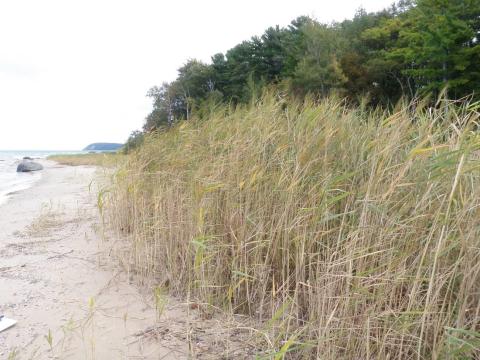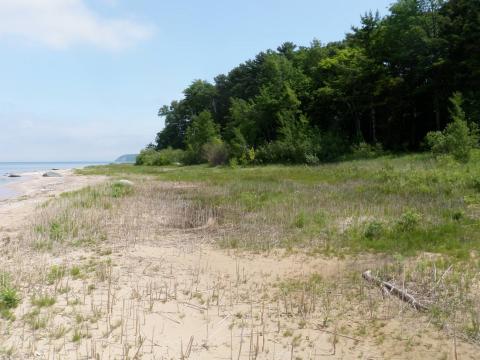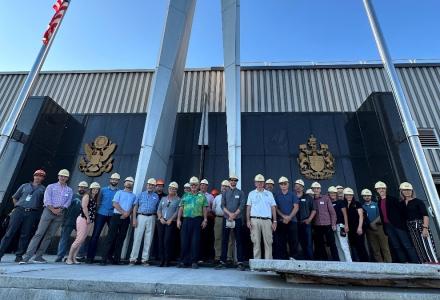
A recent study out of western Michigan suggests that removing invasive Phragmites stands from waterfront properties substantially increases property values. What’s more, researchers say a long-term, consistent funding mechanism through municipal governments to treat and control Phragmites could help maintain those higher taxable values.
Using housing price data from the Ottawa County, Michigan, assessor’s office and information on Phragmites stands and removals from Spring Lake Township, Ottawa County, and The Nature Conservancy, researchers found there seems to be a link between housing prices and whether Phragmites is present, said Erik Nordman, natural resources and economics policy professor at Grand Valley State University.
With all Phragmites removed within 400 meters of a house, he said it appeared that would drive up the sale price of that house by about US$1,500. In aggregate for the entire neighborhood they looked at – around the mouth of the lower Grand River – home prices would have gone up by a total of $830,000 for the 384 properties surveyed.

Compiling information to research the question was tricky. First, researchers had to find a location that had Phragmites issues and had gone through with a removal treatment. Further, Michigan doesn’t survey home values regularly. Nordman said they were able to find homes that had sold at least twice, with sales before and after the treatment. Since the observation period ran from January 2004 to August 2015, they also had to account for inflation and overall changes in home prices – including the housing market crash that started around 2007.
Once the data was together, researchers were able to crunch the numbers and reach conclusions about the economic benefits of Phragmites removal.

But Phragmites is a tough plant to get rid of permanently, and since usual funding streams for invasive species management tend to be short-term, tax increment funding, or TIFs, might serve as a good longer-term alternative, said Shaun Howard, project manager for The Nature Conservancy’s Eastern Lake Michigan region.
A TIF district is a space where typically some kind of redevelopment is done up front, and resulting property tax value increases in that district are used to pay off the initial investment. Howard proposes that instead of traditional development, some kind of TIF (or equivalent mechanism) could be used to generate funds to pay back the initial removal cost for Phragmitesplants, along with maintenance removals in case they begin to creep back into the area. Such a setup could be self-sustaining over long periods of time, he said.
Howard said the key at this point is finding a local municipality that has the interest, political will and the intersection of coastal homes and Phragmitesproblems to test whether this could work. The Nature Conservancy is in the process of looking for and talking to potential municipal partners for this next step.
“We think there’s an opportunity here to start talking with local municipalities about how we might trial something like this and take it to a larger scale,” Howard said. “We know there’s a lot of money put in year over year on invasive species control, so it would be great to build a sustainable funding mechanism.”
Grants for removing invasive plants like Phragmites have historically not been available on a recurring, annual basis. In the United States, funds on the federal level have come through the Great Lakes Restoration Initiative, with $5 million in grants spent on invasive species control in 2014 alone. Some states have regularly recurring grants too; Michigan spent more than $11 million between 2014 and 2017 on grants for management and removal through its Invasive Species Grant Program. Canada has provided fundsthrough its Great Lakes Protection Initiative.
According to the study, published in the Journal of Ocean and Coastal Economics, average Phragmites treatment costs for the entire study area totaled around US$25,000 for removing about 36 hectares of the plant, while the annual property tax revenue increases were around $13,000-15,000 a year. Since treatments can be done on an every-other-year basis, they should prove beneficial to communities dealing with the pests. Nordman says the benefits might extend to other invasive plants, such as Japanese knotweed, though such research hasn’t been done at this time.



Kevin Bunch is a writer-communications specialist at the IJC’s US Section office in Washington, D.C.




